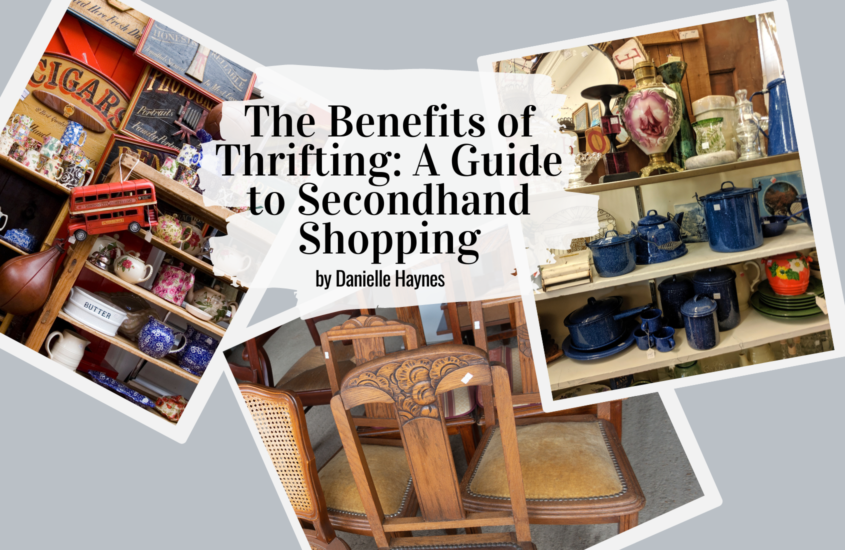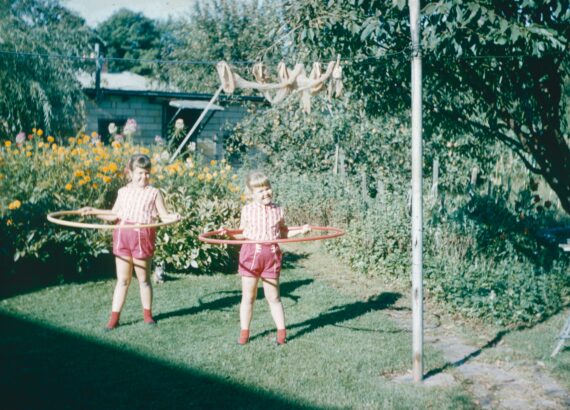The Benefits of Thrifting: Ultimate Guide to Secondhand Shopping
Danielle Haynes |
I love thrifting, in fact I even used to sell thrifted finds on Etsy as a hobby to make a bit of extra cash. Today there are so many resources to find a good deal on vintage and second hand items from places like Facebook Marketplace to your local antique or vintage store. The thrifting deals are everywhere, you just need to know where to look.
My Experience
Knowing that a secondhand item has been well loved and lived a long life will really give you some relief if something happens to it. Buying second hand can give some much needed peace of mind when you have pets and young kids. Because accidents are bound to happen and that’s okay.
You Can Find Good Quality Items Secondhand
My favorite furniture piece in our home is a farmhouse-style vintage dining table that was refurbished by one of my favorite local antique stores in Spokane, WA called Tossed and Found.
It Saves Money To Buy Secondhand
Secondhand shopping is the frugal choice. If you are trying to be smart with your money, maybe even get out of debt but you still need clothes and furniture (which we all do) then thrifting is a great option for you. Being frugal doesn’t necessarily mean always going with the cheaper option, but it does mean weighing your options and finding what works best for your financial situation.
Older Items Are Usually Better Quality
I recently decided to change up my home décor style and was surprised how much the items I bought second hand were worth when I looked them up. Now an item is only worth what someone will pay for it, but just because something was only $2 at the thrift store doesn’t mean that’s the actual value.
Your Home Will Be Unique
Your home won’t be a carbon copy. This happens often in today’s society, where you go to someone’s home and most of the décor you have seen before in the aisles of Walmart a million times before, like those signs that read “Live, Laugh, Love.” Many people have the same couch from Ikea and the same décor from Walmart or Hobby lobby. Before you know it, those of us who have similar styles end up with almost the exact same décor, and no one wants that. It’s like showing up to realize you and your friend are wearing the same outfit but instead it’s your whole home.
It’s Better For The Environment
Reusing furniture and décor or even taking something old and making it new is one way to lessen our footprint, and to be a good steward of the resources that God has given us. While it may not save the world to buy a used table from a thrift store or Facebook marketplace it certainly makes a small difference not just for the planet but for your pocketbook.
In today’s culture, we are so used to instant gratification. When you buy second hand you might have to wait to find exactly what you want, it may take a couple trips, and if you are looking for bigger pieces it could take a couple months of waiting to come across it. The practice teaches us to be thankful for what we own and be patient.
Tips for Thrifting
P.S. You can use lemon essential oil and a good soak to scrub off price stickers.
Things To Buy
-
Wood furniture
-
Picture frames
-
Mirrors
-
Clothing
-
Household décor
-
Kitchenware
-
Serving ware
-
Artwork
-
Brass décor
-
Wooden bowls, cutting boards, utensils.
-
Glassware
-
Vases
-
Canning jars
-
Lamps
-
Books
-
Baskets
Things To Avoid
-
Fabric furniture
-
Undergarments
-
Appliances
-
Hardware
-
Lawn tools
-
Tech/electronics
-
Car seats
-
Stuffed animals
-
Mattresses
-
Shoes
-
Cribs
-
Pet beds
-
Toys
-
Throw pillows & inserts






